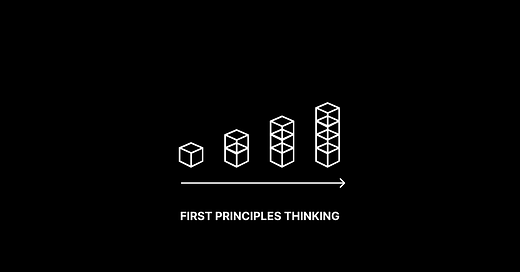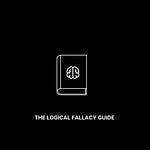Welcome to the 600 new members of the curiosity tribe who have joined us since Friday. Join the 66,096 others who are receiving high-signal, curiosity-inducing content every single week.
Today’s newsletter is brought to you by Revelo!
If you’re a growing technology company, chances are you’re struggling to find talented developers right now.
Revelo helps companies like GitHub, Intuit, and Carta hire faster, so they can grow faster! It’s a talent platform that matches you with vetted remote developers in Latin America who work in US time zones. It offers a full-suite platform that covers payroll, benefits, compliance, and more, allowing you to hire full-time remote developers without the headaches.
Get matched with vetted candidates within 3 days—guaranteed. They even offer a 100% risk-free 14-day trial. If you’re not satisfied, you pay nothing.
SPECIAL OFFER: Revelo is offering Curiosity Chronicle subscribers 20% off the first 3 months of any hire! Use the link below to take advantage of this crazy deal!
Today at a Glance:
First principles thinking is the most powerful framework for deconstructing complex problems, generating creative solutions, and driving non-linear outcomes.
A first principle is a basic, foundational assumption—one that cannot be deduced or broken down any further. In simple terms, think of first principles as foundational truths that do not require any additional assumptions.
As a simple rule of thumb: when speed and efficiency are critical, use reasoning by analogy; when creativity and innovation are required, use first principles thinking.
To leverage first principles thinking, use Socratic Questioning to drill down to the foundational truths of a problem. Once you uncover them, you can begin to slowly build up to a more creative, imaginative solution.
First Principles Thinking

The most successful entrepreneurs, investors, and scientists in the world often reference first principles thinking as having been critical to their success.
Run a simple Google search of the term and you’ll find countless articles, videos, and quotes from an array of billionaires and Nobel Prize winners who all point to the importance of first principles thinking.
Accordingly, first principles thinking has become something of a buzz-phrase—often talked about, yet rarely understood (let alone employed effectively).
In this post, I’d like to provide a simple, intuitive breakdown of first principles thinking: what it is, how it works, when to use it, and how to leverage it in your problem solving journey.
Introduction to First Principles
First principles thinking is the most powerful framework for deconstructing complex problems, generating creative solutions, and driving non-linear outcomes.
Let’s start with the basics: what is a first principle?
Aristotle—the Ancient Greek philosopher, polymath, and student of Plato—defined a first principle as "the first basis from which a thing is known."
A first principle is a basic, foundational assumption—one that cannot be deduced or broken down any further. In simple terms, think of first principles as foundational truths that do not require any additional assumptions.
They are the base layer—the atomic unit.
First principles thinking—sometimes referred to as "reasoning from first principles”—is a problem-solving and innovation framework that requires you to deconstruct a complex problem down to these most foundational elements.
The aim: to ground yourself in the foundational truths and build up from there.
Elon Musk explained this in a 2013 interview:
“First principles is kind of a physics way of looking at the world. You boil things down to the most fundamental truths and say, ‘What are we sure is true?’ … and then reason up from there.”
This method runs in contrast to our natural wiring.
When we encounter challenging problems, our tendency is to rely on base level assumptions we have been told are true (or we believe to be true). Why? It’s quick and easy to do.
This is called "reasoning by analogy”—it leads to solutions that are much like something else. Slight modifications or iterations on an existing solution. The unimaginative, linear solutions that closely resemble what has been done before.
To be sure, it can be very useful when speed is the priority. Moving fast has its advantages at times—like if our ancestors were trying to avoid being eaten by a lion! But reasoning by analogy falls short when dealing with complex problems requiring creative, imaginative solutions.
Imagine the solution to a problem as a house:
The foundation of the house is the assumptions upon which the ultimate solution will rest.
If it's a shoddy, quickly-built foundation, the house may collapse. Even if it remains standing, the architect and builder will know that they are limited in what they can build on top of it.
If it's a sturdy, deliberately-built foundation, the house will thrive. The architect and builder can get creative with what they build on top of it, as they know the base is strong.
First principles form that sturdy, deliberately-built foundation for the house.

Elon Musk & SpaceX
To bring this to life, let's look at a classic example of first principles thinking in action: Elon Musk & SpaceX.
First off, what was the problem?
Sending a rocket to Mars to begin the process of making humans an interplanetary species. Yes, I think that meets the bar of being complex…
As he began digging in to develop a solution, Elon Musk quickly discovered the cost of buying a rocket was astronomical (bad pun intended)—$65 million. It was not only financially untenable—SpaceX was a startup at the time—it was also grounded in assumptions of how rockets have always been built and what they should cost.
Taking stock on the situation:
Complex Problem ✅
Creativity > Speed ✅
So he turned to first principles thinking:
“Physics teaches you to reason from first principles rather than by analogy. So I said, okay, let’s look at the first principles. What is a rocket made of? Aerospace-grade aluminum alloys, plus some titanium, copper, and carbon fiber. Then I asked, what is the value of those materials on the commodity market? It turned out that the materials cost of a rocket was around two percent of the typical price.”
Based on this upfront analysis, SpaceX began building its own rockets and software systems that would dramatically alter the future of the space economy.
Rather than accepting the established "truths" about the cost of a rocket, Musk grounded his problem solving in first principles.
Today, SpaceX rockets are doing extraordinary things at a fraction of the historical cost. Furthermore, Elon Musk and SpaceX shattered the deeply-engrained beliefs about the costs of doing business in space, which has unlocked hundreds of other entrepreneurs and companies to build new, innovative solutions for the future.
The dreams of a Mars voyage in our lifetimes are alive and well…
How to Use First Principles Thinking
Ok, now that we have covered the theory, let’s get into the practice. How can YOU leverage first principles thinking to create better outcomes?
First—and most importantly—determine if first principles thinking is necessary for your given problem, or if reasoning by analogy is a better fit.
As a simple rule of thumb:
For speed/efficiency—reasoning by analogy
For creativity/innovation—first principles thinking
Assuming first principles thinking is the appropriate path, start by asking questions to drill down to the core of the problem at hand. Shane Parrish calls this "Socratic Questioning”—think of it as a methodical process of resurfacing the insatiably curious child inside you.
Here are a few key questions to get you started:
What is the problem I am trying to solve? We often waste time and energy trying to solve the "wrong" problem. Identify the "right" problem.
What do I know to be true about this problem? Write down everything you know about the problem (and its previously attempted solutions).
Why do I believe these "truths" to be true? How do I know they are true? Identify the source of your beliefs on the problem. Be ruthless in evaluating their integrity and validity.
How can I support these beliefs? Is there real evidence to support them? Seek out hard, tangible evidence that proves these beliefs to be true. If you cannot find it, or if the sources are of questionable integrity, you have learned something valuable about your beliefs.
Are my emotions clouding my judgment and reasoning? When emotions drive our thoughts and decisions, we rarely see good outcomes. Remove emotions from the process.
What alternative beliefs or viewpoints might exist? Acknowledging and understanding alternative viewpoints is a superpower. Seek them out. Embrace them. Evaluate them on their merits and ask these same fundamental questions about them.
What are the consequences of being wrong in my original beliefs? Understanding the stakes is critical. Always understand the stakes.
First principles thinking starts with questioning your beliefs. Asking these questions will help you drill down to the foundational truths of a problem. Once you uncover them, you can begin to slowly build up to a more creative, imaginative solution.
Conclusion
The world is filled with unimaginative, copycat solutions. These solutions—slight improvements—predictably lead to linear outcomes.
Leveraging first principles thinking is intense and time consuming—but it is also a clear, tried-and-true path to devising creative solutions to complex problems that drive non-linear, asymmetric outcomes.
Tim Urban captured it well in a recent tweet:
Feed a man a fish, feed him for a night.
Teach a man to fish, feed him for a lifetime.
Teach a man to reason from first principles, he can teach himself to fish. Then he can invent a better fishing rod and feed a billion people.
First principles thinkers are independent thinkers. We can all strive to leverage this framework more effectively in our lives.
The world will be the ultimate beneficiary…
Where It Happens Podcast
Memes Rule the World with Dogecoin Creator Billy Markus
Watch it on YouTube and listen to it on Apple Podcasts or Spotify. Want more? Join the 4,000+ in our unique community on Discord.
Special thanks to our sponsors for providing us with the support to bring this episode to life.
Why settle for the old model of investing when new options offer you so much transparency to help you grow your wealth? Commonstock is the home of smart money and an innovative social media approach to investing. We both love the platform and have used it to enhance our financial strategy.
Commonstock is a social media platform like Reddit, but it removes anonymity and adds transparency. The app lets you see what smart money investors are buying and selling – in real-time – all while letting you see their reason why. This way, you know whether investors have skin in the game, or whether they only talk a big game. It’s a great way to get insights that support your investing strategy.
To learn more and sign-up today go to commonstock.com.
Today’s show is sponsored by Capchase. Capchase is a new financing option for fast-growing startups. They are offering Where It Happens listeners .25% off their first draw, preferred onboarding, and more. Their main product Capchase Grow lets you tap into your future revenue today, meaning you can reinvest in your business faster. We love what they are offering to business owners. To learn more go to capchase.com/room!
Sahil’s Job Board - Featured Opportunities
Seven Seven Six - Finance & Compliance Manager
Elevate Labs - Head of Social Media
Superjoi - Community & Growth
The full board with 30+ other roles can be found here!






















Share this post